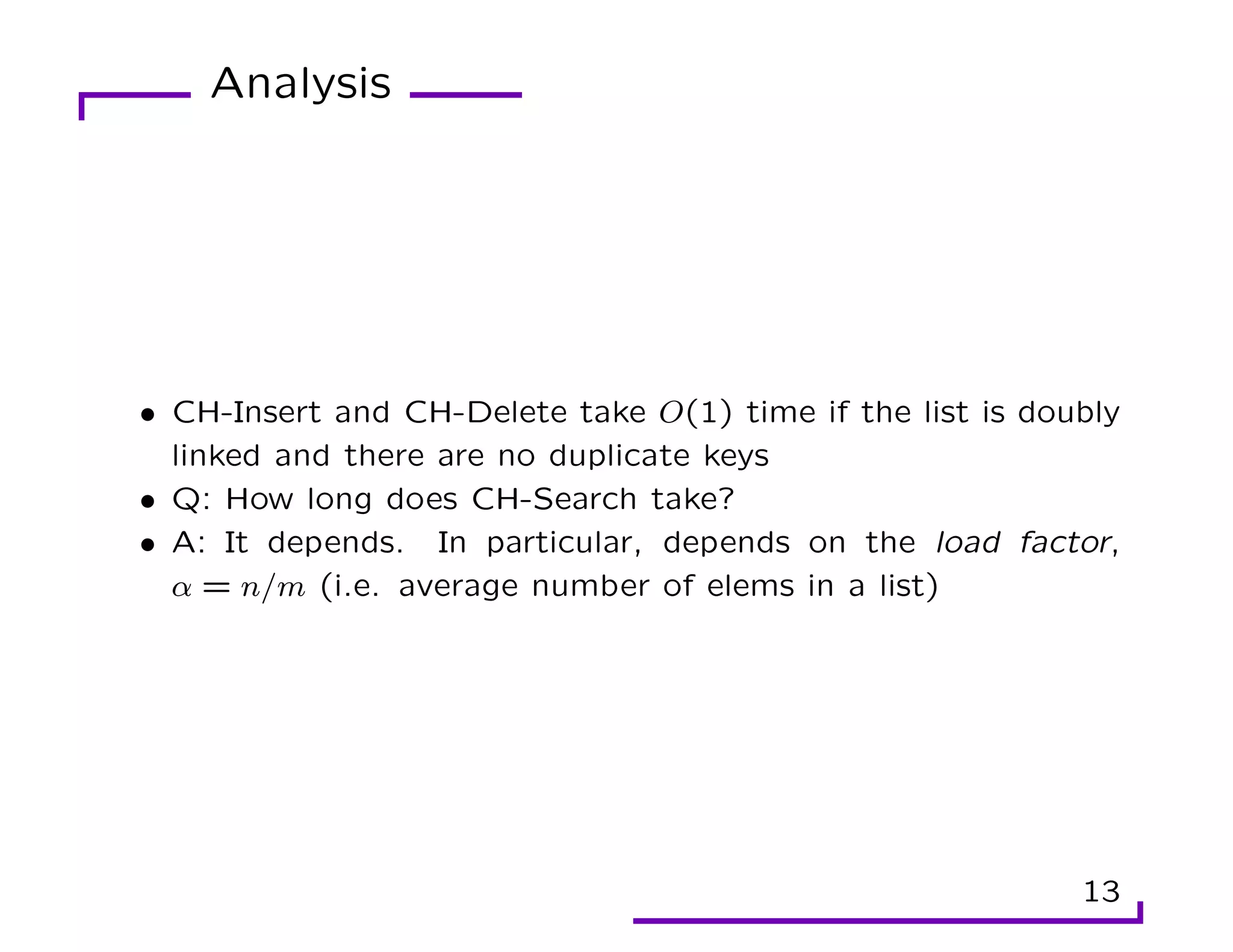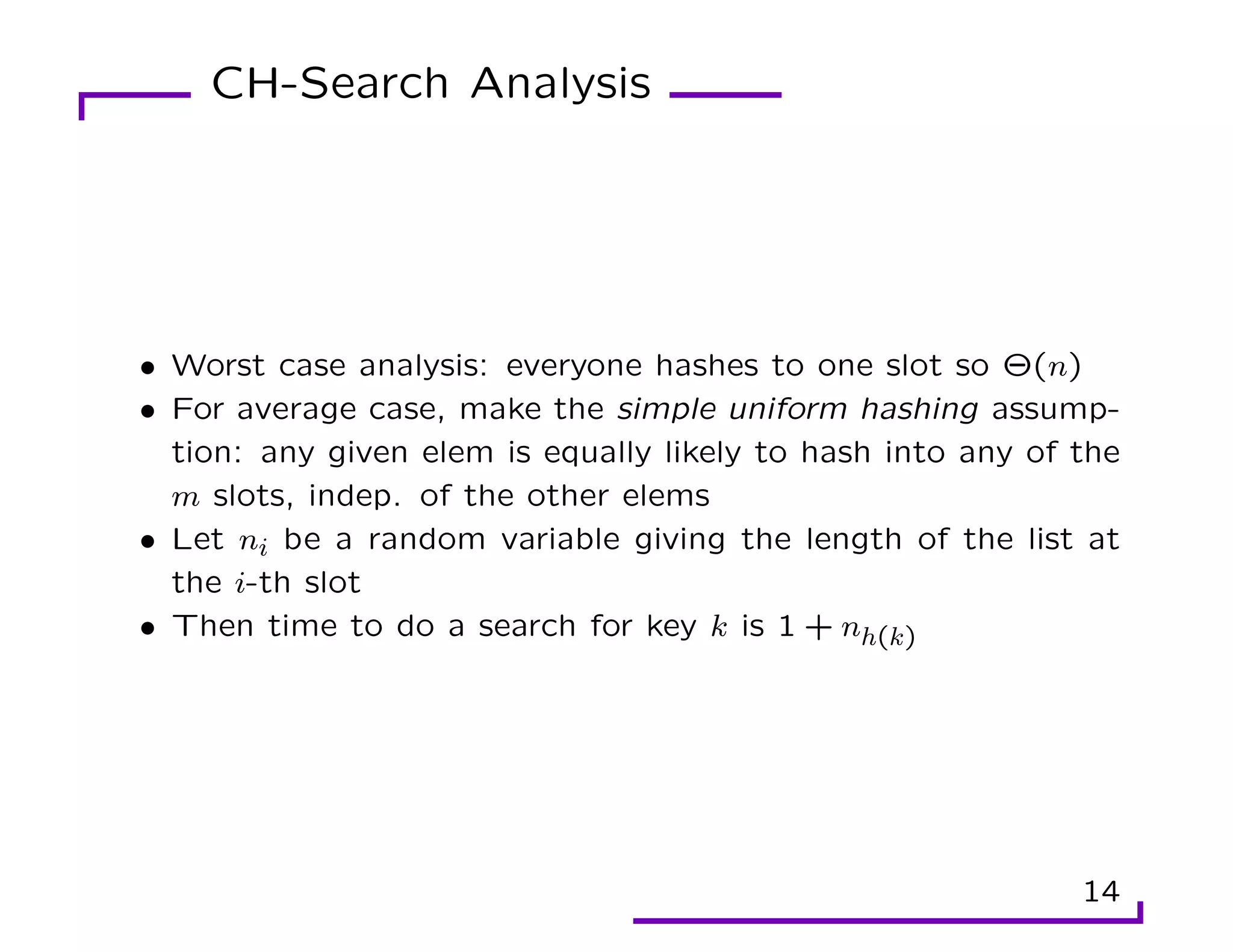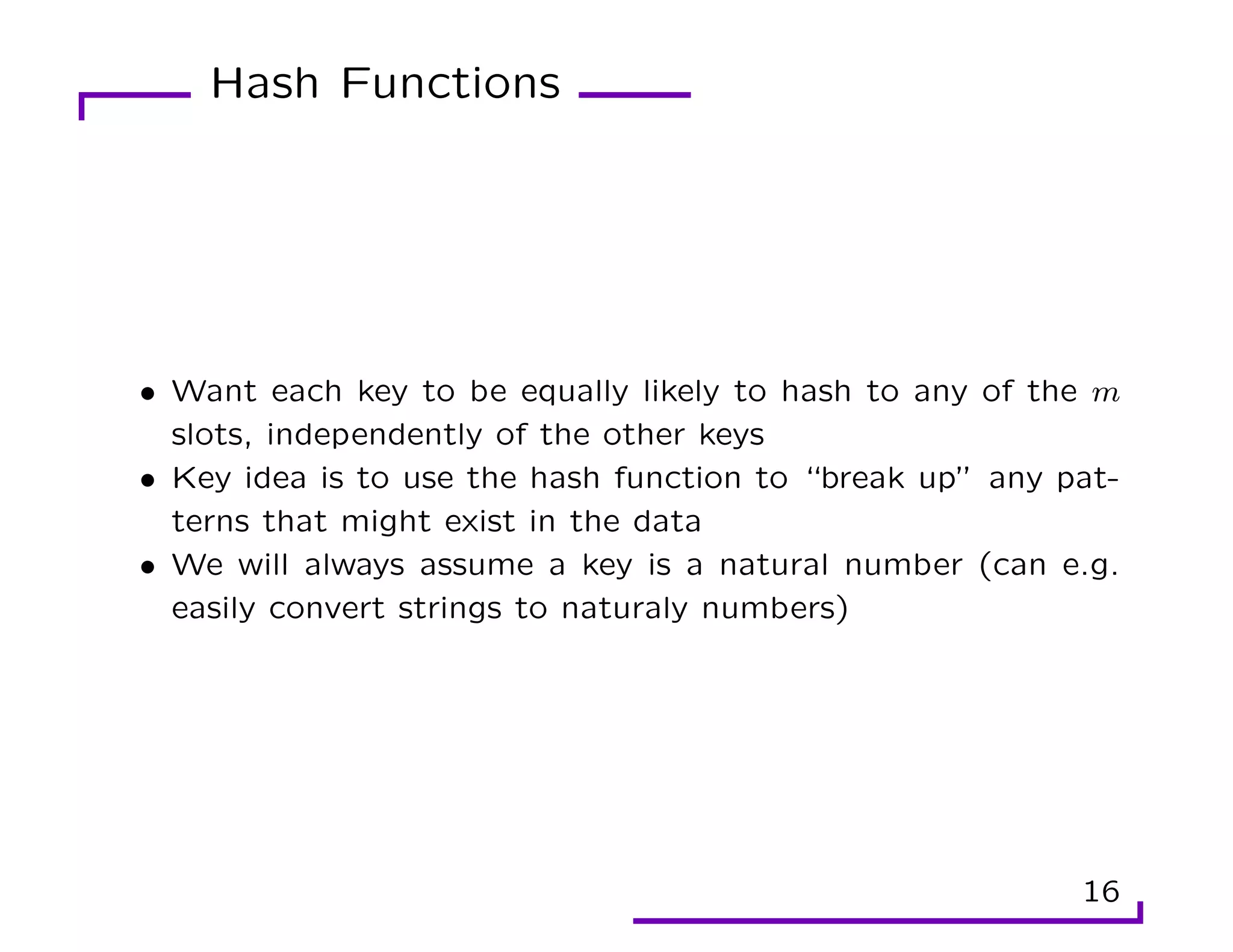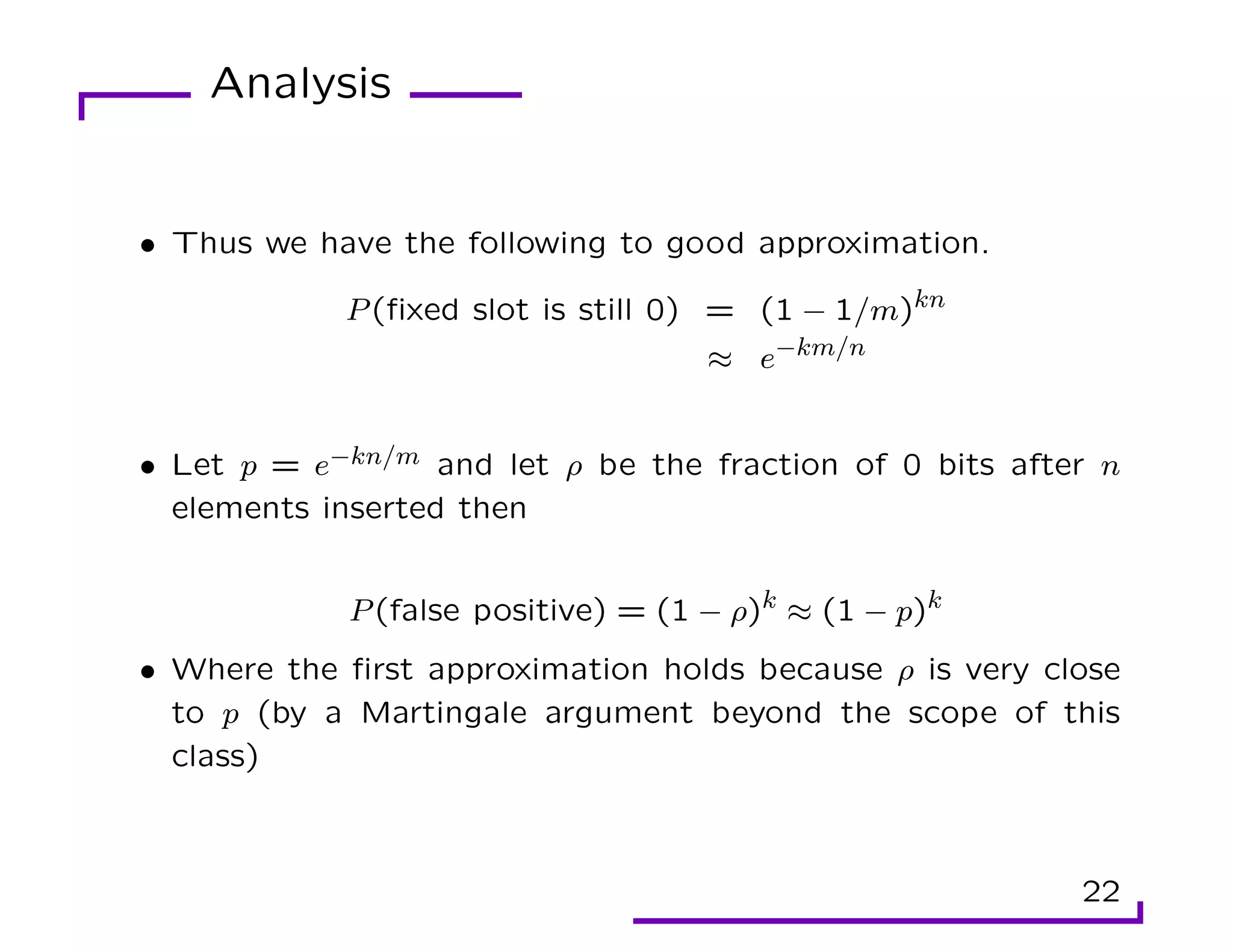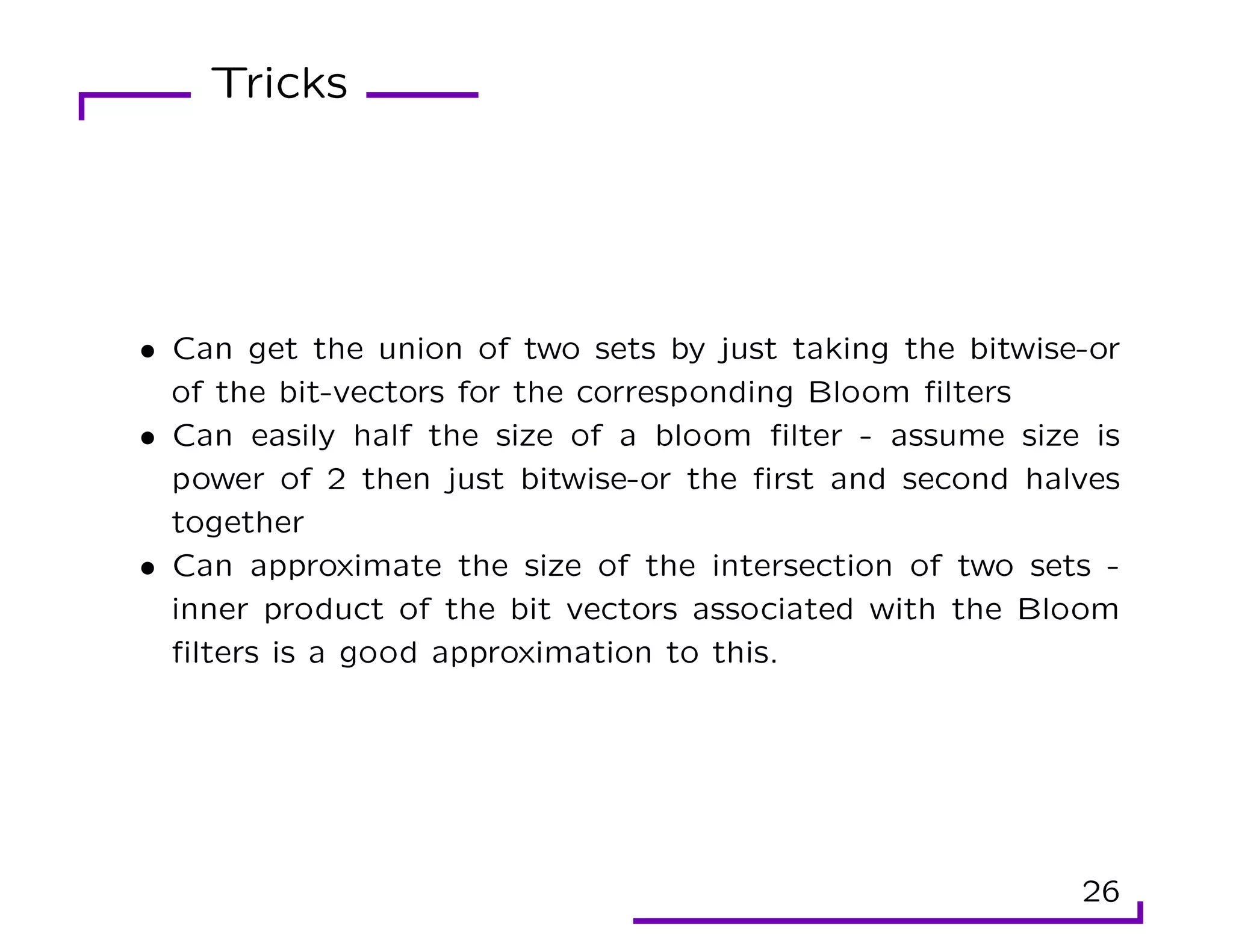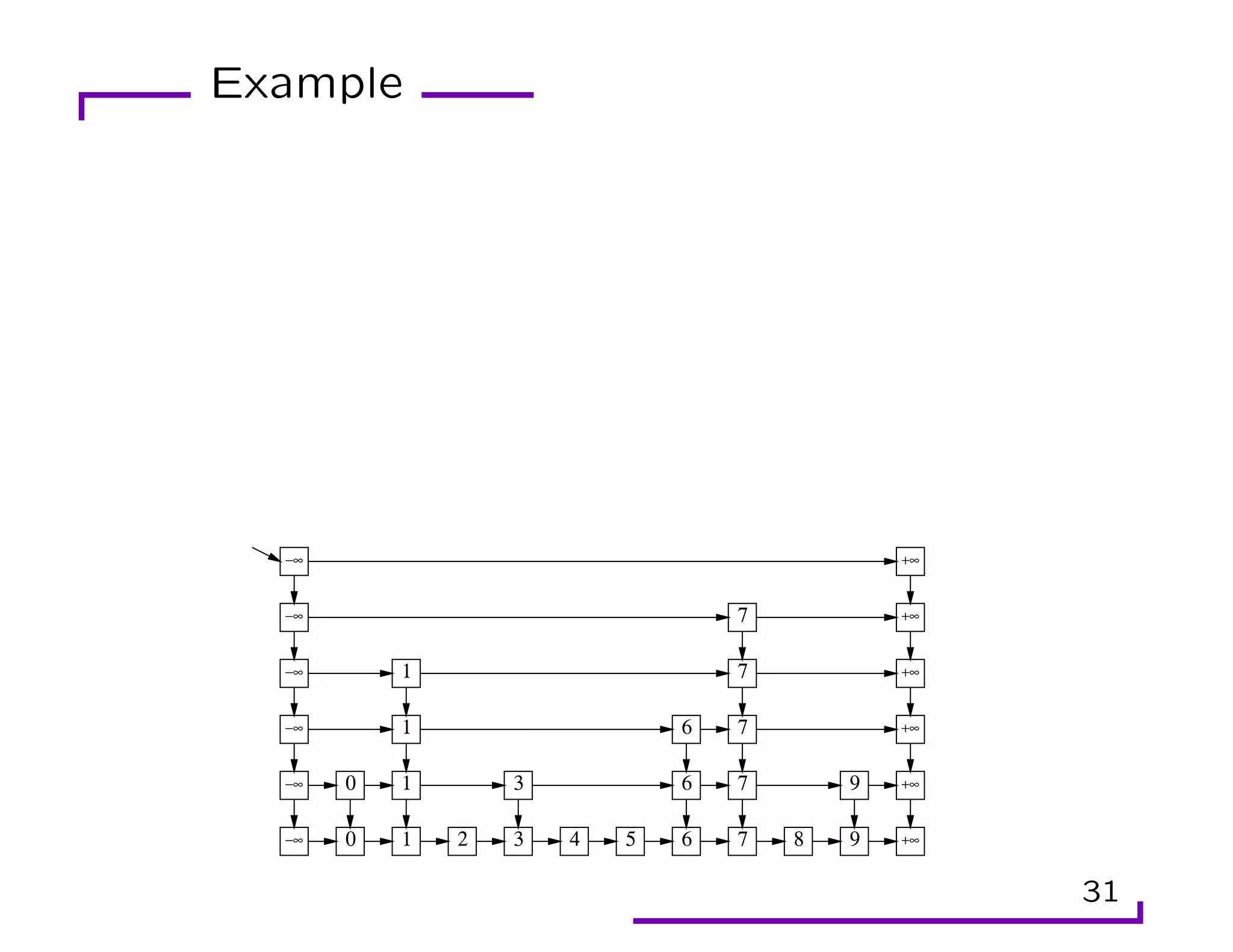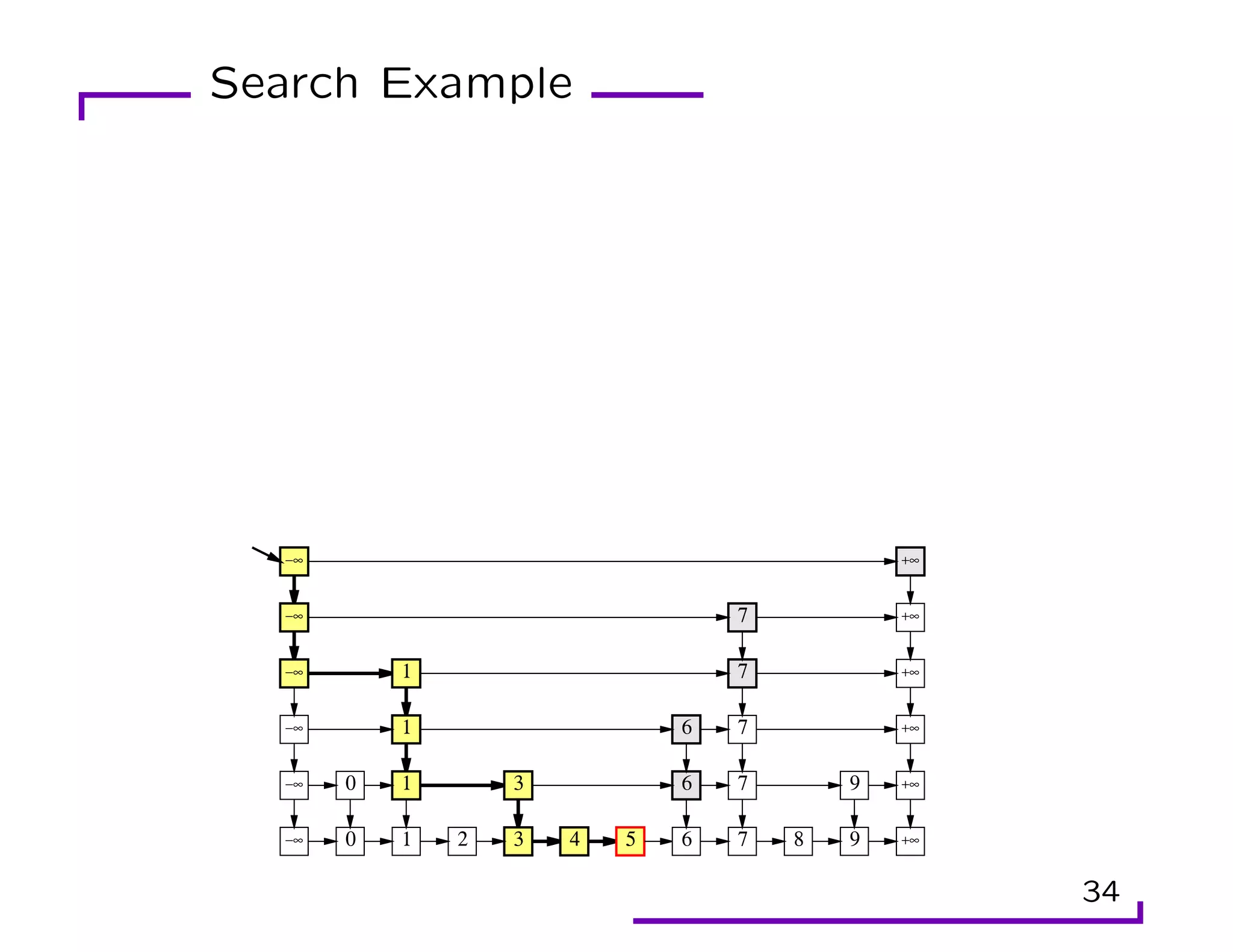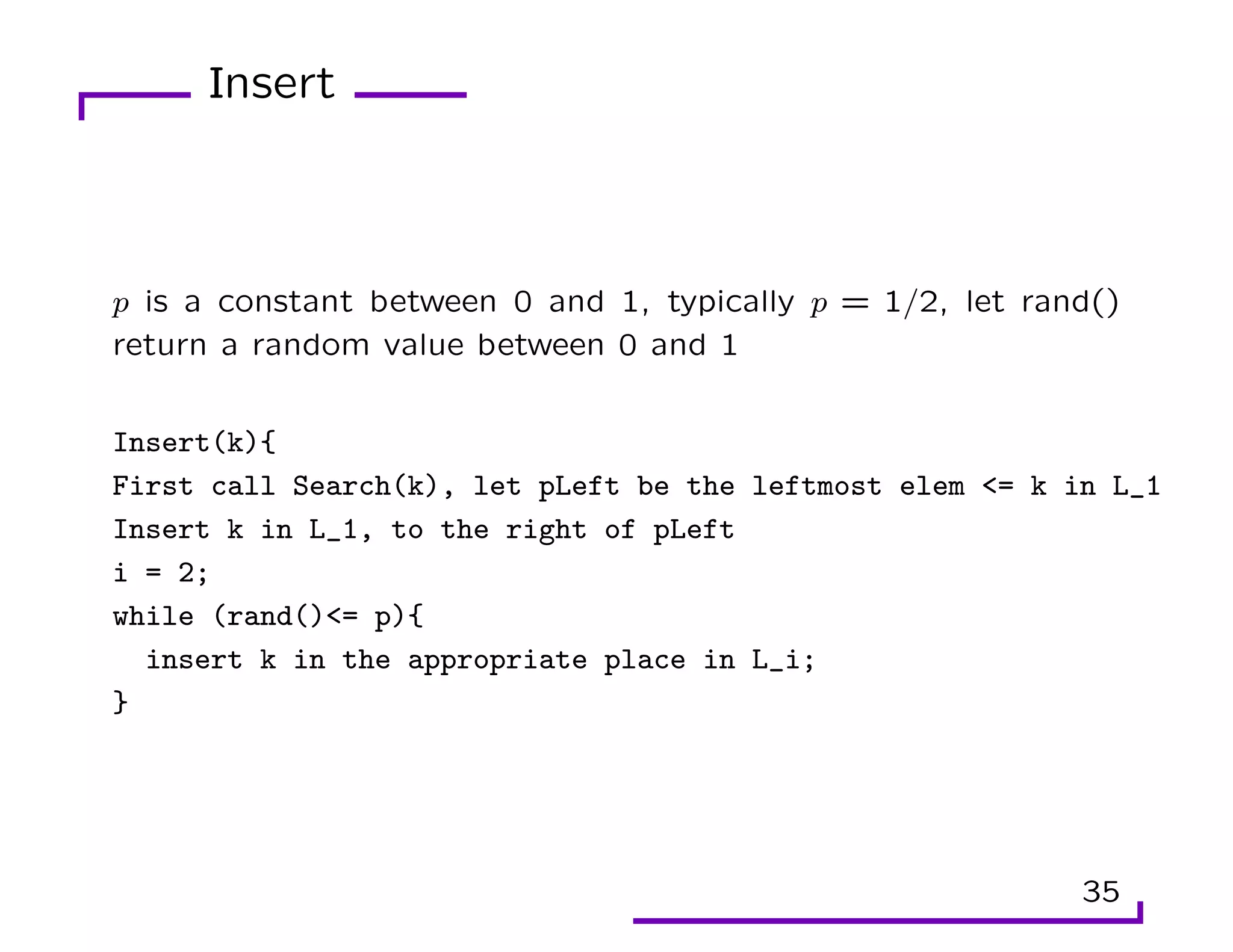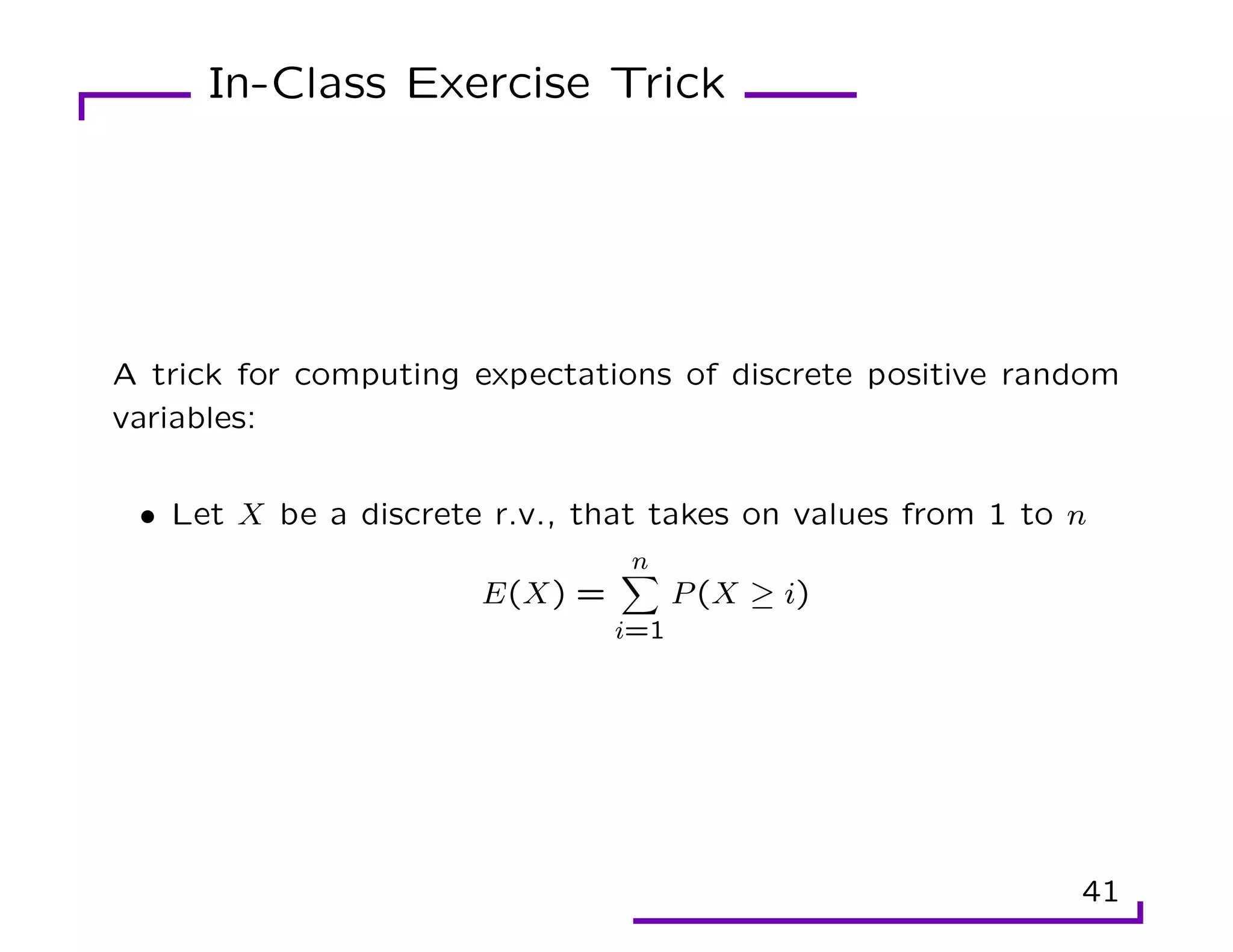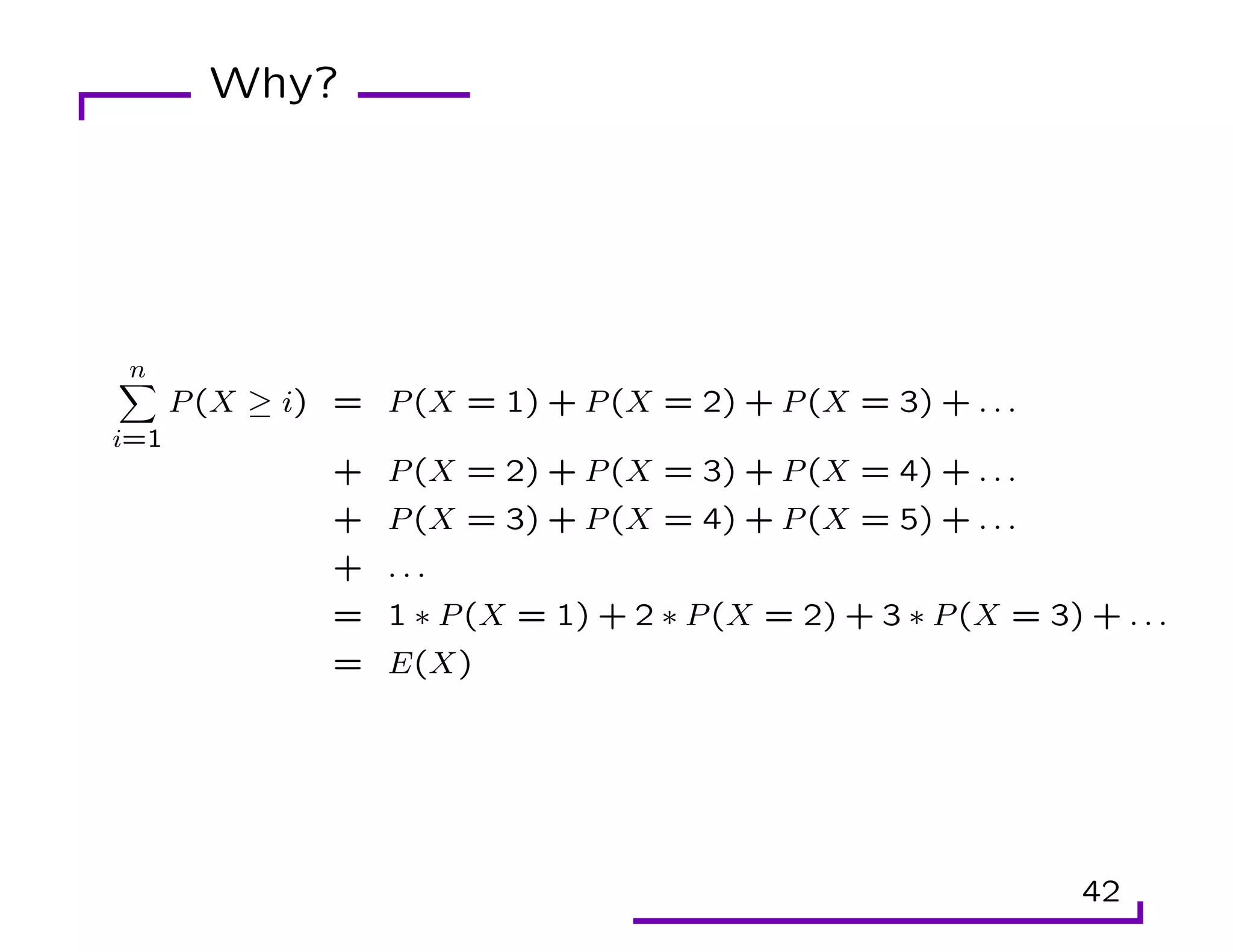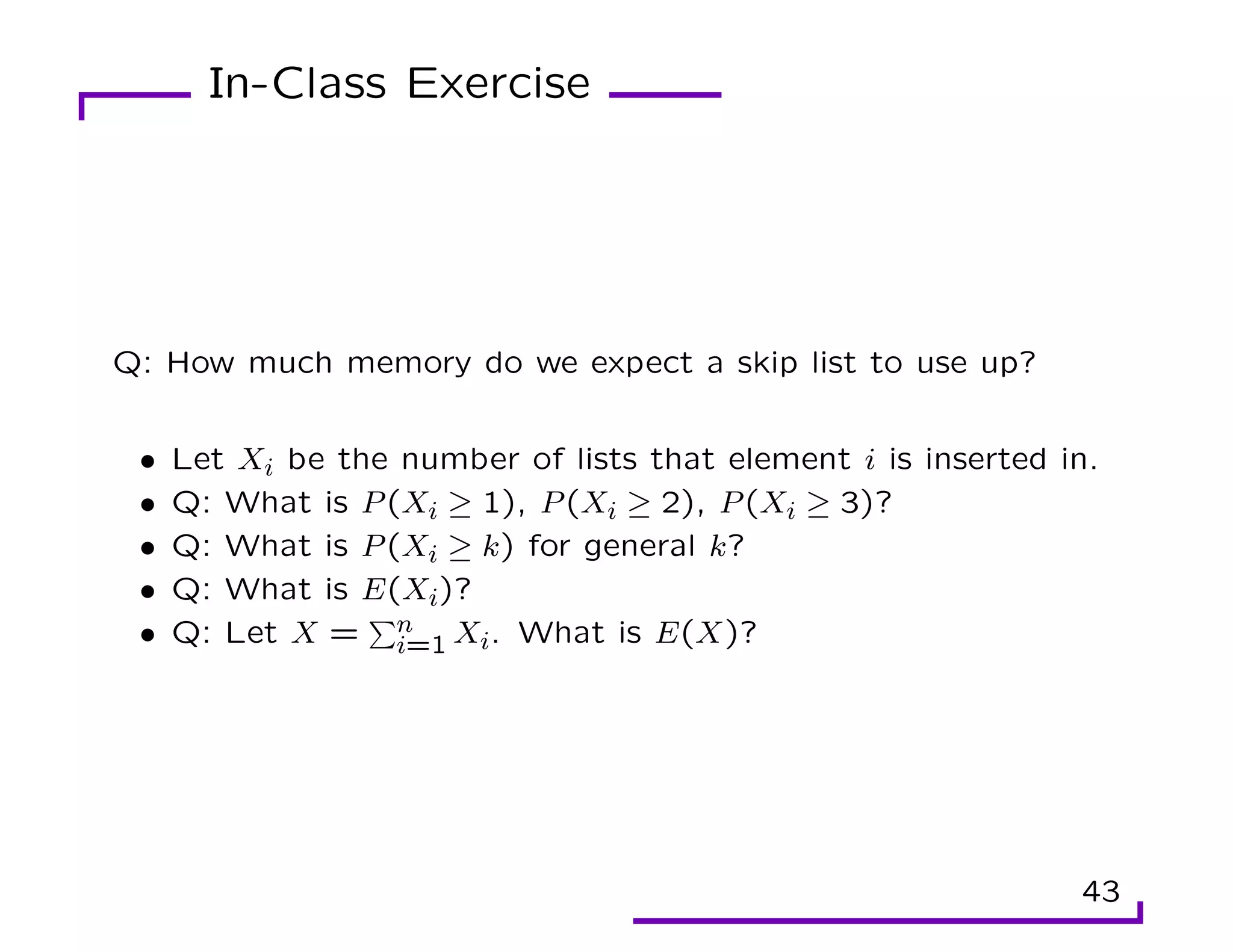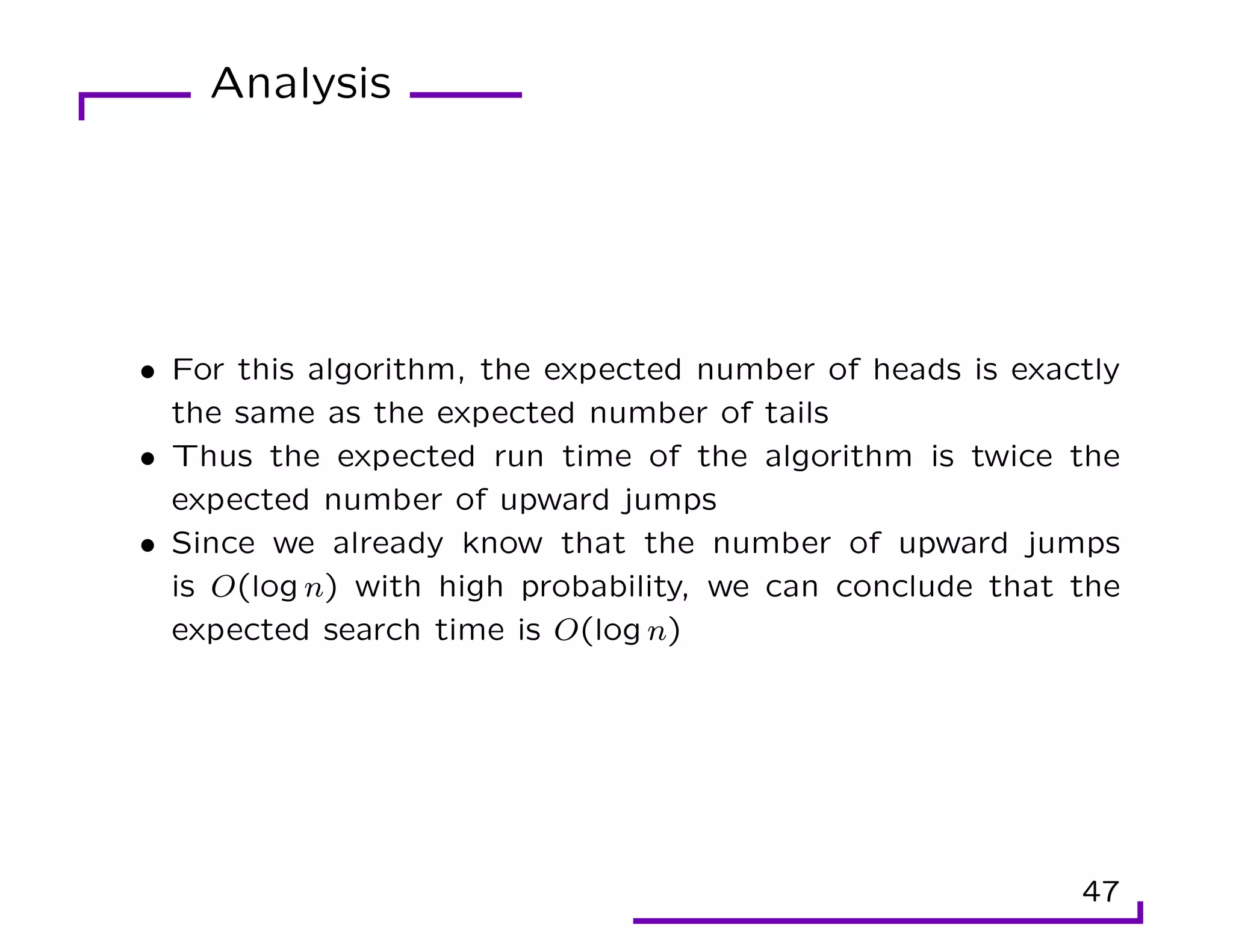This document provides an overview of randomization techniques used in data structures, including hash tables, bloom filters, and skip lists. It discusses how each of these structures implements a dictionary abstract data type (ADT) with operations like insert, delete, and lookup. For hash tables, it describes direct addressing, chaining to resolve collisions, and analysis showing expected constant time performance. Bloom filters are explained as a space-efficient probabilistic data structure for set membership with possible false positives. Skip lists are randomized balanced search trees that provide logarithmic time performance for dictionary operations.


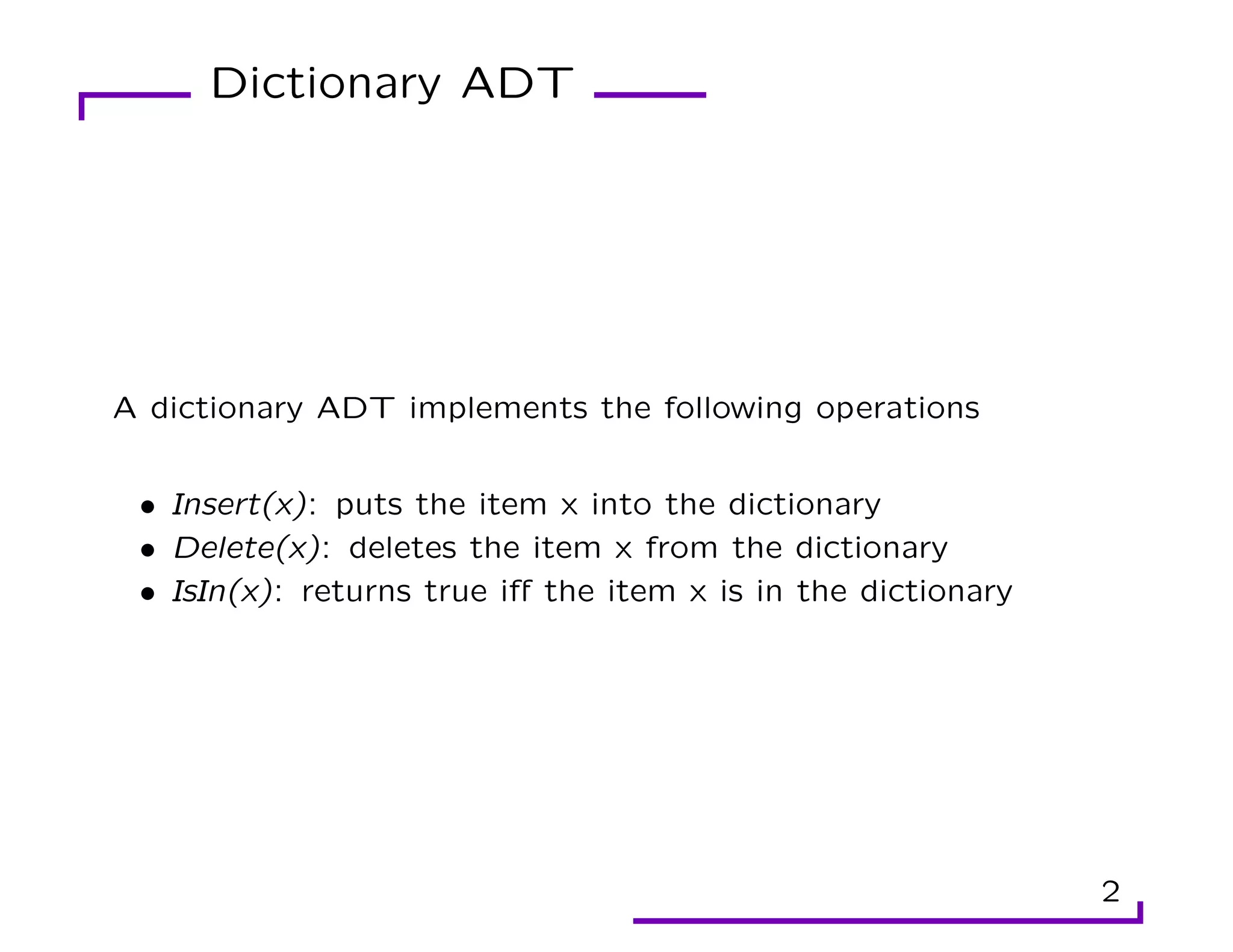





![Direct Addressing
• Suppose universe of keys is U = {0, 1, . . . , m − 1}, where m is
not too large
• Assume no two elements have the same key
• We use an array T[0..m − 1] to store the keys
• Slot k contains the elem with key k
8](https://image.slidesharecdn.com/lec2-220929162840-68bcfe96/75/Randamization-pdf-9-2048.jpg)
![Direct Address Functions
DA-Search(T,k){ return T[k];}
DA-Insert(T,x){ T[key(x)] = x;}
DA-Delete(T,x){ T[key(x)] = NIL;}
Each of these operations takes O(1) time
9](https://image.slidesharecdn.com/lec2-220929162840-68bcfe96/75/Randamization-pdf-10-2048.jpg)

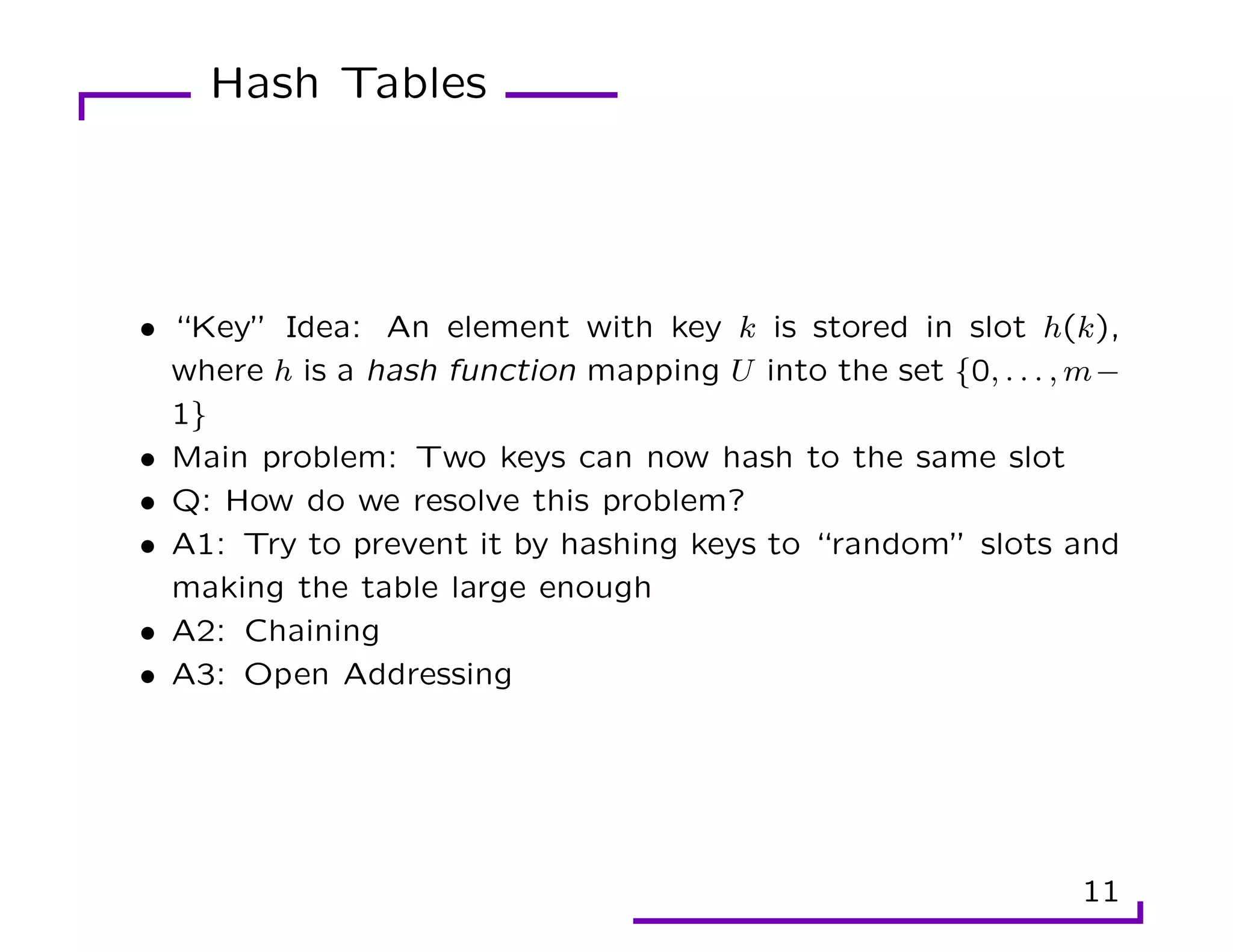
![Chained Hash
In chaining, all elements that hash to the same slot are put in a
linked list.
CH-Insert(T,x){Insert x at the head of list T[h(key(x))];}
CH-Search(T,k){search for elem with key k in list T[h(k)];}
CH-Delete(T,x){delete x from the list T[h(key(x))];}
12](https://image.slidesharecdn.com/lec2-220929162840-68bcfe96/75/Randamization-pdf-13-2048.jpg)
